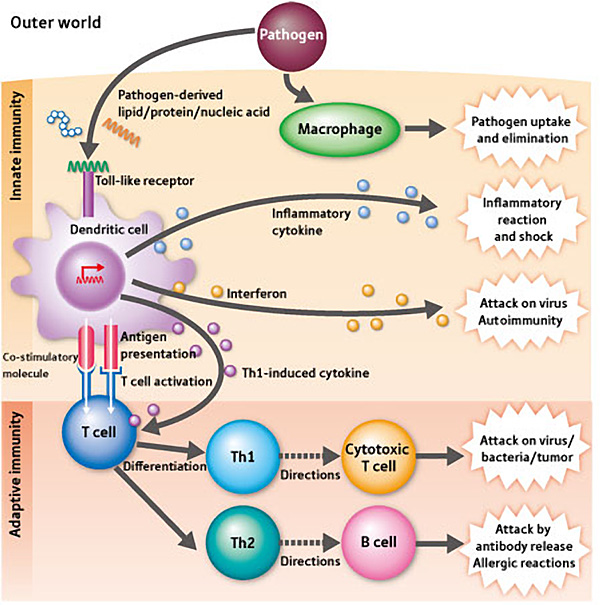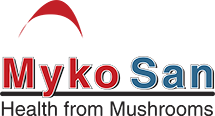An Introduction to Antiviral Mechanisms of Medicinal Mushrooms
Cell culture (in vitro), animal (in vivo), and human (clinical) trials helped scientists determine the antiviral mechanisms of medicinal mushrooms. Their active compounds fight viruses in two major ways:
- they boost the immune system:
- directly (specific response) and/or
- through various factors of humoral and cellular immunity; and
- attack the virus directly, which prevents the proliferation of viruses and can stop viral infections from developing.
Research has shown that many of the mechanisms work on various virus species and strains, and can greatly inhibit the progress of viral diseases influence their outcome.
Boosting the Immune System
Active medicinal mushroom compounds, especially mushroom-specific beta glucans (a group of high-molecular-weight polysaccharides) modify and boost the immune system. They stimulate and assist:
- macrophage activity
- activity of Interleukin-1 (IL-1)
- creation of antibodies
- production of T lymphocytes (and prevent their reduction)
- regeneration of bone marrow cells,
- secretion of human interferons
- activities of natural killer (NK) cells
- the aggressiveness of granulocytes against viruses
- increase the number and enhance the activity of helper T4 (CD4) lymphocytes, and
improve many other immune system functions.

HIV virus reduces the number of T4 lymphocytes; their number is used to track the progression of the disease. HIV virus does this by attacking macrophages and dendritic cells in lymph nodes and the skin, blocking the mechanism that informs the immune system more T lymphocytes have to be produced to fight the infection. Lentinan (and certain other mushroom beta glucans) increases T4 lymphocyte production and stimulates the macrophages. Even when infected with HIV, the macrophages fight effectively and reduce HIV replication.

Stopping the Infection
Research by Tochikura on several HIV strains demonstrated that the whole extract of shiitake mushroom mycelium (LEM) very effectively blocks cell-to-cell and extracellular HIV infection (through body fluids). When started on time, LEM blocks both routes of HIV infection, and is superior to AZT (zidovudine, azidotymidine, brand name: Retrovir), which is not only expensive, but also very toxic to bone marrow and causes many dangerous side effects. AZT becomes less effective over time and does not extend life expectancy, even if started early. Contrary to this, LEM is much more effective, completely non-toxic, and much cheaper. Still, AZT is a registered drug and LEM a dietary supplement.
In 1989 H. Suzuki (University of Tokyo) found that LEM fraction called EP3:
- regenerates bone marrow cells, where many of the immune system cells are made
- inhibits the creation of HIV enzymes needed for its replication (by a rate of 90%)
- prevents HIV damage to T lymphocytes.
Thus, EP3, the most effective component of LEM, simultaneously boosts the immune system and inhibits viruses directly.
Following these successes in Japan, Sharon gave HIV-positive and AIDS patients (without major symptoms) 2 grams of LEM daily. After 6-12 months the symptoms disappear without recurrence; this is then maintained by using 650 mg of LEM per day. In another study, Jones reported a case study of a patient who used LEM for 2 months, and the viral antigen could no longer be detected.
In seropositive people, HIV is concealed in the lymphatic tissues for a long time before it damages the immune system. HIV/AIDS researchers concluded that they should not wait until T lymphocyte count starts to drop, but instead start using immune boosting and antiviral treatments immediately, to increase the chance of never developing AIDS.
Since these medications should be used for years, they must not further harm the patient. Most researchers agree that using several drugs is necessary to accomplish both goals. Medicinal mushrooms, being very safe and effective, certainly deserve their place. However, the Western dogma has unfairly ignored and underestimated natural products, favoring drug design based on combinatorial chemistry instead. This means synthesizing millions of low molecular weight compounds and identifying potentially useful components.
At the 11th World AIDS Conference (Vancouver, Canada, 1996), Italian immunologist M. Clerici reported the results of a broad European AIDS study. He estimated that 30-50% of the people who come into contact with HIV do not become seropositive, because their immune system protected them. More recent research found that, depending on the exposure route, this risk is even smaller.
Besides avoiding high-risk activities, high-quality medicinal mushroom products can safely boost the immune system and reduce the risk of infection.
Lentinan, PSK and many other active mushroom compounds hinder:
- the adherence of viruses to host cells, which is required for all infections
- the copying of viral genetic material using our DNA (by inhibiting the production of reverse transcription enzymes through which viruses inject their genetic code into our DNA to multiply)
- the multiplication of viruses, which have penetrated the host cells.
